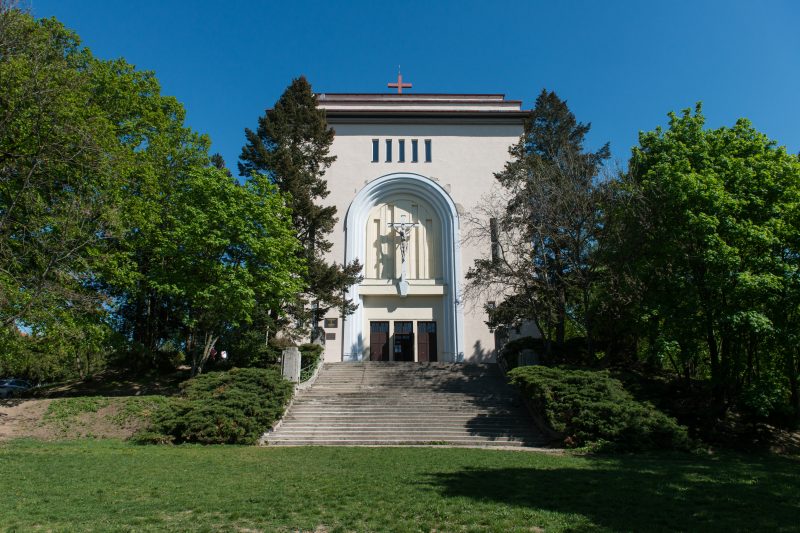The Coronation Cathedral and the Towerless Church
Do you know how the romantic Blue Church got its iconic colouration, or why the church on Calvary lost its tower? Take a tour of the city and discover the secrets behind Bratislava’s diverse mix of churches.
If you want to learn more, join the Sacral Bratislava tour. In two hours, a guide will lead you through the history of local churches and monasteries and describe their current use.
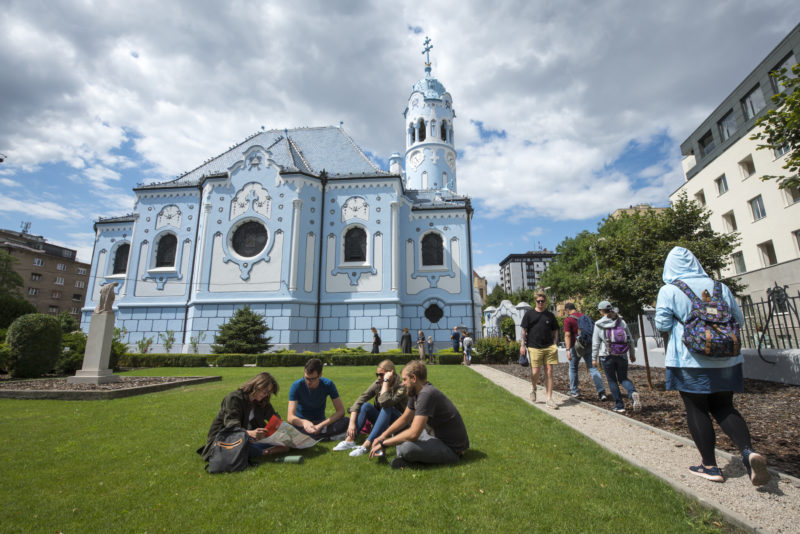
Where Hungarian monarchs were coronated
The largest and most important church in Bratislava is the St Martin’s Cathedral A church of the same name originally stood in the premises of the Bratislava Castle, where the provost and the Chapter had its seat.
“Even though the St Martin church moved down from the castle hill in 1221, the Gothic church, which stands here today, was built only after the Franciscan church,” said guide Zuzana Godárová. After decades of construction work, the central nave was consecrated in 1452.
During the 18th century, its entire interior was redesigned in the Baroque style. The church regained its Gothic look in the 19th century. Only the Baroque chapel of St John the Almoner by Austrian sculptor George Rafael Donner maintained its style.
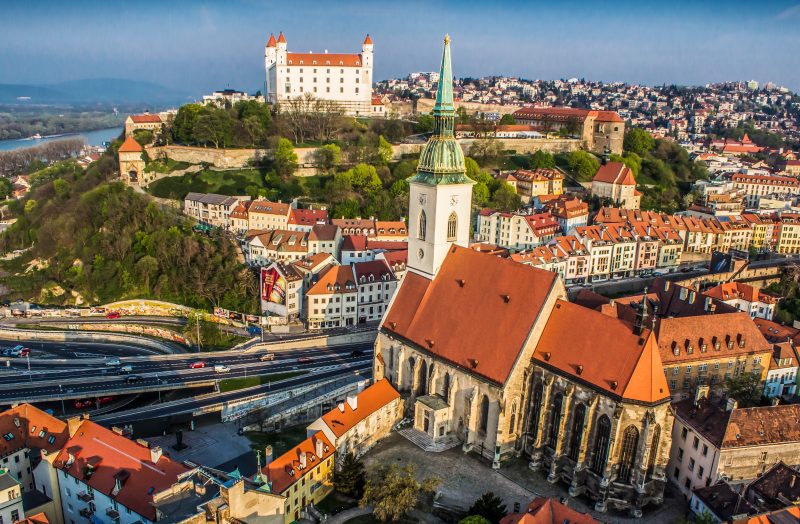
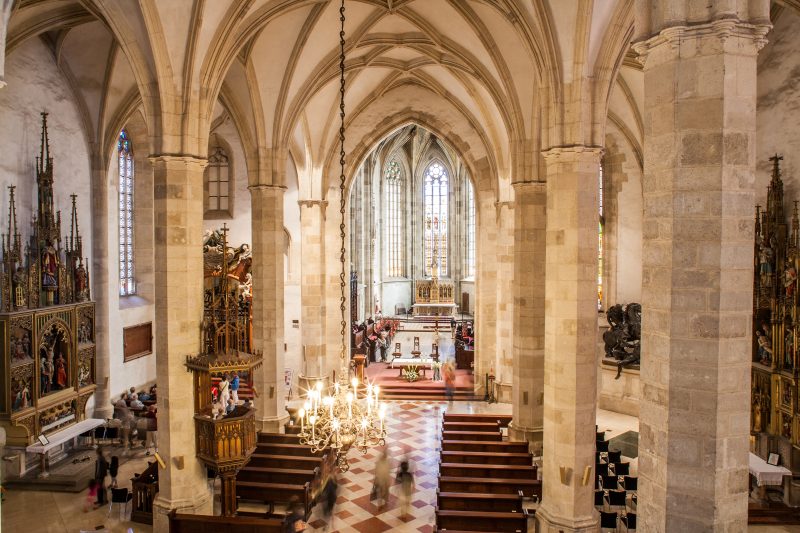
Without a doubt, St Martin’s Cathedral was most famous during the age of coronations. Maria Theresa, the area’s most well-known monarch, was crowned in the grand church. The city relives these famous moments every year at the end of June.
The Church of the Annunciation of the Lord on the Franciscan Square, known as the Franciscan church, dates back to the second half of the 13th century and was built in Gothic style. However, during the earthquake that Pressburg, today Bratislava, suffered in 1590, it lost its Gothic vault. Only the presbytery and nave’s side walls survived. The ruined vault was replaced by a Renaissance one in the 17th century.
The most beautiful Baroque church
There are several Baroque churches in Bratislava, but the most beautiful is the Parish Church of St John of Matha on Župné Square, known as the Trinitarian church. It was built in the first half of the 18th century in the spirit of high Baroque, inspired by the St Peter Church in Vienna. The church’s oval nave is vaulted with a dome decorated with unique illusive frescoes by the Italian artist Antonio Galli Bibiena, which makes it seem much taller than it actually is.
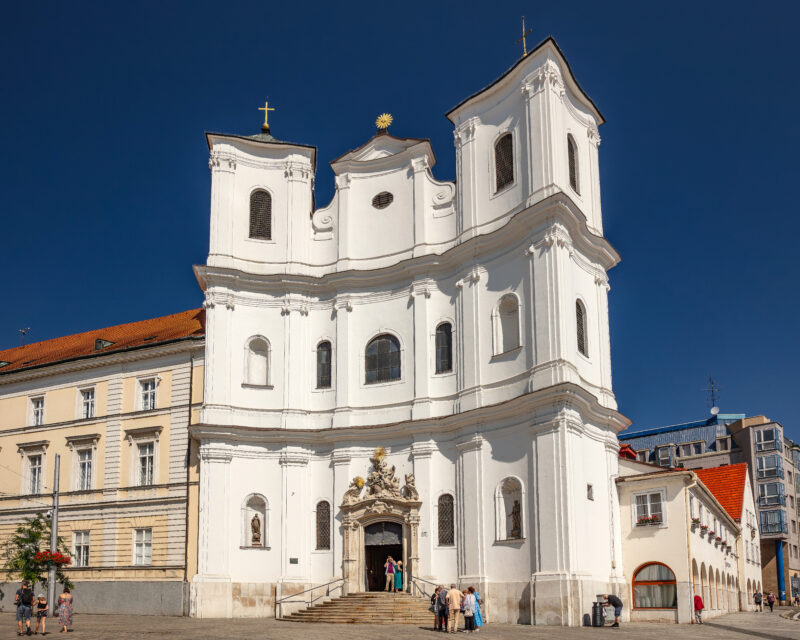
In the historical city centre, the Church of the Most Holy Saviour, also known as the Jesuit church, captivates visitors. Originally built in the late-Renaissance style in the first half of the 17th century, it was later redesigned in the Baroque style. It served as a Protestant prayer house, so it did not have a tower. However, in 1672, after the suppression of Protestantism, it was taken away from the Protestants and handed over to the Jesuits. They richly re-designed the church’s interior, which is now in sharp contrast to its rather plain exterior. Its Rococo pulpit is said to be the most beautiful in the city.
The Blue Church and the church without a tower
The Art Nouveau Parish Church of St Elisabeth from 1888 on Bezručova Street, known more commonly as the Blue Church, is one of the most visited tourist attractions in the city. It was originally gray with yellow reliefs on the walls, and only the shingles and decorations on the walls were blue. Only later was the whole church painted blue.
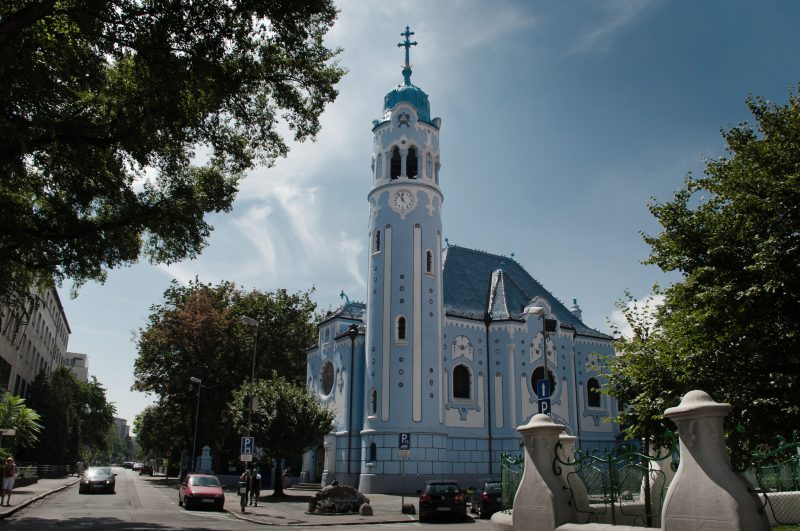
The modern Church of Our Lady of the Snows from 1948 underwent more drastic changes. The communist bigwigs did not like that a cross lit with neon tubes stood on top of the church’s 50-metre tower, because it spread messages of faith and hope. They ordered the shutting off of the neon lighting and the demolition of the tower, so that the only remaining landmark of the city was the monument dedicated to Soviet soldiers, Slavín.
The church itself stands on Bratislava’s Calvary, which includes a replica of the Lourdes Cave.
“This unique pilgrimage site was set up in the former quarry by countess Gabriela Szápáryová after her own deep experience during her pilgrimage to the French Lourdes at the end of the 19th century,” says Veronika Kolesárová, who comes here to draw new strength or just think in silence.
